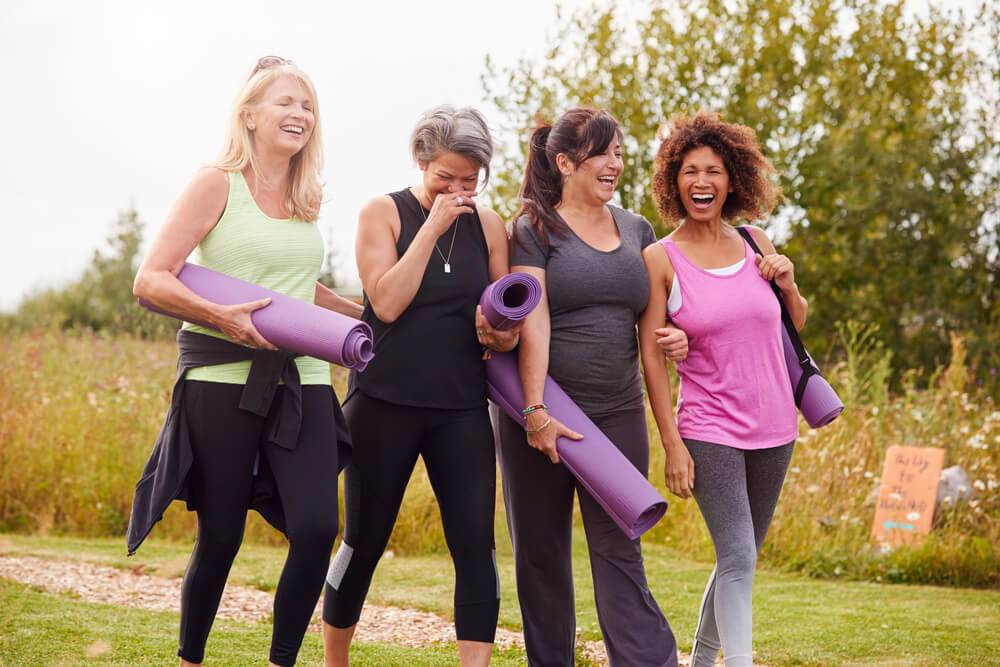An old Carole King song captures the emotional value of having a friend. New research from the Stanford Center on Longevity confirms it, saying that social engagement promotes physical and mental health while social isolation costs people both personal and medical problems. According to the study, “socially isolated individuals face health risks comparable to those of smokers.”
The study analyzes two main areas: meaningful relationships with friends and family and social involvement in the community. For most age groups in America, social engagement has gone down marginally since 1995. Unfortunately, there’s one group where social engagement has decreased significantly: baby boomers between 55 and 64 years old.
Here are six factors identified by the study, which are largely things you can control, that could lead to a better quality of life. Try these measures you can take to brighten up your retirement years.
1. Intimate relationships. Marriage improves our personal well-being as well as our prospects for a long, healthy life. Baby boomers are less likely to be married than previous generations. However, boomers are more likely to be living with a partner, and research suggests that partnered individuals may enjoy many of the same benefits. Some 70 percent of people who are married or who have a partner report sharing important conversations at least once a week – a marker for a positive, healthy relationship. So if you have an intimate partner, make sure to cultivate that relationship. And if you don’t, well, it’s never too late.
2. Interaction with family. Almost three-quarters of Americans report that they interact with family members outside of their household at least once a week. But there’s a wide variation. Hispanics are closer to their families than non-Hispanic whites. And women are more likely than men to interact with family members. No one knows why, but baby boomers as a group are the least likely to interact with family members who do not live with them. But I can report that there is hope. For years, my 20-something son didn’t consider me cool enough to “friend” on Facebook. But just last week I finally got an invitation. So now we are being cool together.
3. People have your back. An important aspect of family is knowing that a parent or sibling will be there for you in a time of need. Since 1995, people in the 55 to 64 age group who could turn to a family member for help decreased from 79 percent to 69 percent. But again, different groups report different results. Only 55 percent of those without a high school diploma said a family member would help them, compared to 73 percent of those with a higher education. And 80 percent of people in their 70s said they have a family member who would be there for them. So take a lesson from those who are older and wiser: Be there for your family members, so they will be there for you when you need help.
4. Know your neighbors. Some 60 percent of Americans regularly interact with friends and neighbors. And about half say they can rely on a friend for support. Baby boomers are less likely to interact with friends compared with people our age a generation ago. But here we can learn something from our children. The percentage of young people who can count on a friend in times of need has increased. Perhaps because the marriage rate in this group has decreased there is more reliance on friends.
5. Volunteering. Volunteer activities help you make friends and also sharpen your sense of purpose in life. The rate of volunteering has remained fairly constant over the years – at about 25 percent – with women participating more than men. The average number of hours volunteered goes up with age. Baby boomers average about 150 volunteer hours, compared to barely 100 hours for their children. But the elderly volunteer even more – almost 200 hours per year for those over 75.
6. Get involved in your community. People who are active in the community – including religious activities – enjoy better health and longer lives. Unfortunately, community involvement has declined about 10 percent since 1995. But here’s the important point. Community involvement is highest among those who are married or in a committed relationship, as well as those with higher levels of education. So what’s clear is that there’s a virtuous cycle. More friends, better relationships, more education and increased involvement in community all reinforce one another to improve your life. We only need to take one step onto this virtuous cycle to know we are on the right path.
Tom Sightings is the author of “You Only Retire Once” and blogs at Sightings at 60.
Source: http://money.usnews.com








